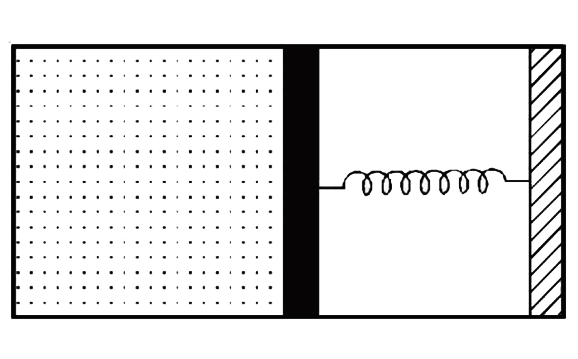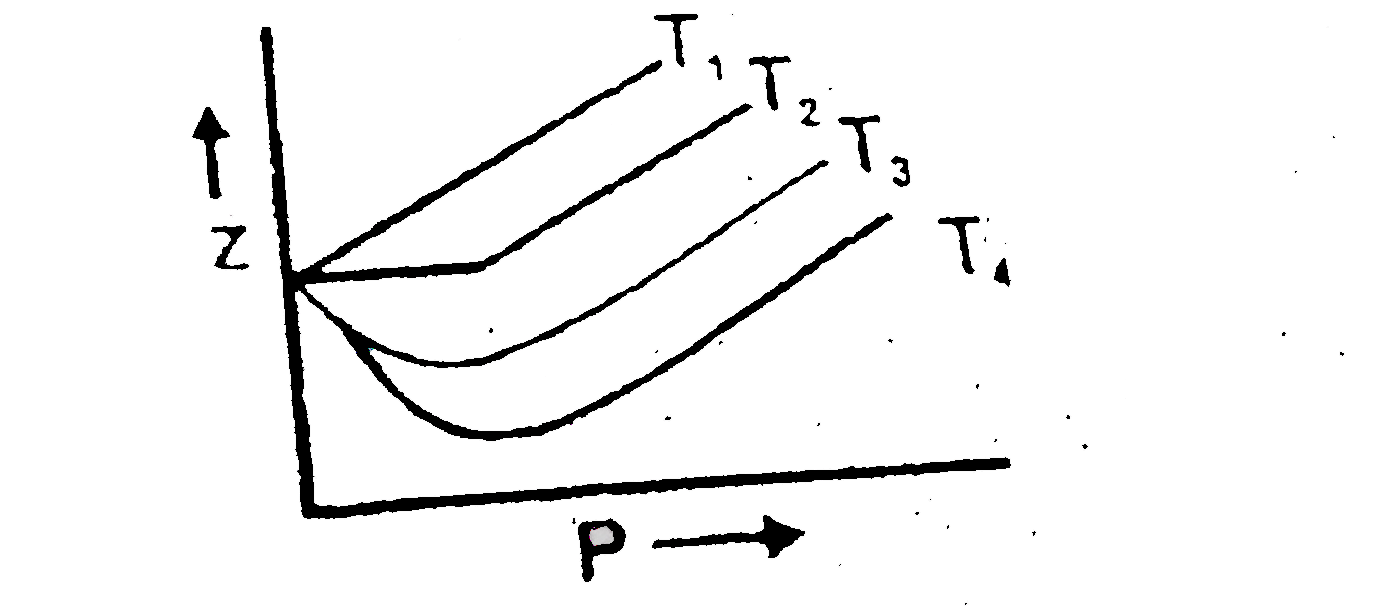Consider a spherical shell of radius R at temperature T. The black body radiation inside it can be considered as an ideal gas of photons with internal energy per unit volume u=UV∝T4 and pressure P=13(UV). If the shell now undergoes an adiabatic expansion the relation between T and R is :
T∝e−R
T∝e−3R
T∝1R
T∝1R3
The correct Answer is:C
To solve the problem, we need to establish the relationship between the temperature T and the radius R of the spherical shell during an adiabatic expansion of the black body radiation inside it.
1. Internal Energy per Unit Volume:
The internal energy per unit volume u is given by:
u=UV∝T4
We can express this as:
u=kT4
where k is a constant.
2. Pressure Relation:
The pressure P is related to the internal energy per unit volume as:
P=13(UV)=13u
Substituting for u:
P=13kT4
3. Ideal Gas Law:
From the ideal gas law, we have:
PV=nRT
Rearranging gives:
P=nRTV
4. Equating Pressures:
Now, we can equate the two expressions for pressure:
nRTV=13kT4
Simplifying this, we can cancel one T from both sides:
nRV=13kT3
5. Volume of the Spherical Shell:
The volume V of a spherical shell with radius R is given by:
V=43πR3
6. Substituting Volume:
Substituting V into the equation:
nR43πR3=13kT3
This simplifies to:
3nR4πR3=13kT3
7. Rearranging the Equation:
Rearranging gives:
T3=9nR4πk⋅1R3
This shows that:
T3∝1R3
8. Final Relationship:
Taking the cube root of both sides, we find:
T∝1R
Conclusion:
Thus, the relationship between the temperature T and the radius R of the spherical shell during adiabatic expansion is:
T∝1R
The internal energy per unit volume u is given by:
u=UV∝T4
We can express this as:
u=kT4
where k is a constant.
The pressure P is related to the internal energy per unit volume as:
P=13(UV)=13u
Substituting for u:
P=13kT4
From the ideal gas law, we have:
PV=nRT
Rearranging gives:
P=nRTV
Now, we can equate the two expressions for pressure:
nRTV=13kT4
Simplifying this, we can cancel one T from both sides:
nRV=13kT3
The volume V of a spherical shell with radius R is given by:
V=43πR3
Substituting V into the equation:
nR43πR3=13kT3
This simplifies to:
3nR4πR3=13kT3
Rearranging gives:
T3=9nR4πk⋅1R3
This shows that:
T3∝1R3
Taking the cube root of both sides, we find:
T∝1R
Thus, the relationship between the temperature T and the radius R of the spherical shell during adiabatic expansion is:
T∝1R
Topper's Solved these Questions
- KTG & THERMODYNAMICSBook:RESONANCE ENGLISHChapter:KTG & THERMODYNAMICSExercise:Advancel Level Problems
Explore 1 Video
- KTG & THERMODYNAMICSBook:RESONANCE ENGLISHChapter:KTG & THERMODYNAMICSExercise:SUBJECTIVE QUESTIONS
Explore 27 Videos
- KTG & THERMODYNAMICSBook:RESONANCE ENGLISHChapter:KTG & THERMODYNAMICSExercise:PART - I
Explore 18 Videos
- KINETIC THEORY OF GASES AND THERMODYNAMICSBook:RESONANCE ENGLISHChapter:KINETIC THEORY OF GASES AND THERMODYNAMICSExercise:Exercise
Explore 64 Videos
- MAGNETIC FIELD AND FORCESBook:RESONANCE ENGLISHChapter:MAGNETIC FIELD AND FORCESExercise:Exercise
Explore 64 Videos
Similar Questions
The internal energy of an ideal gas is sum of total kinetic energy of molecules. Consider an ideal gas in which the relation among U, P and V is U=2+3PVThe gas is
View SolutionAn ideal gas with adiabatic exponent γ=43 undergoes a process in which internal energy is related to volume as U=V2 . Then molar heat capacity of the gas for the process is :
View Solution
Knowledge Check
The relation between internal energy U, pressure P and volume V of a gas in an adiabatic process is
U=a+bPV where a and b are constants. What is the effective value of adiabatic constant γ ?A1. abB2. b+1bC3. a+1aD4. ba
The value of γ=CP/CV is 4/3 for an adaibatic process of an ideal gas for which internal energy U=K+nPV. Find the value of n (K is constant) :
View SolutionAn ideal monoatomic gas is confined in a horizontal cylinder by a spring loaded piston (as shown in the figure). Initially the gas is at temperature T1, pressure P1 and volume V1and the spring is in its relaxed state. The gas is then heated very slowly to temperature T2,pressure P2and volume V2. During this process the piston moves out by a distance x. Ignoring the friction between the piston and the cylinder, the correct statement (s) is (are)

View SolutionIn the given pressure-temperature (P−T) diagram, what is the relation between volumes V1 and V2 for a fixed mass of a gas?
View SolutionAt pressure P and absolute temperature T a mass M of an ideal gas fills a closed container of volume V. An additional mass 2M of the same gas is added into the container and the volume is then reduced to V3 and the temperature to T3. The pressure of the gas will now be:
View SolutionThe temperature of an ideal gas undergoing adiabatic expansion varies with volume as T∝V−34, then the value of CPCV for the gas is
View SolutionThe relation between internal energy U, pressure P and volume V of a gas in an adiabatic processes is : U=a+bPV where a = b = 3 . Calculate the greatest integer of the ratio of specific heats [γ] .
View SolutionWhen a sample of ideal gas is changed from an initial state to a final state, various curves can be plotted for the process like P-V curve, V-T curve,P-T curve etc.
For example, P-V curve for a fixed amount of an ideal gas at constant temperature is a rectangular hyperbola, V-T curve for a fixed amount of an ideal gas at constant volume is again a straight line. However, the shapes may vary if the constant parameters are also changed.
Now, answer the following questions :
From the given plot between Z and P for a real gas the correct is :

View Solution